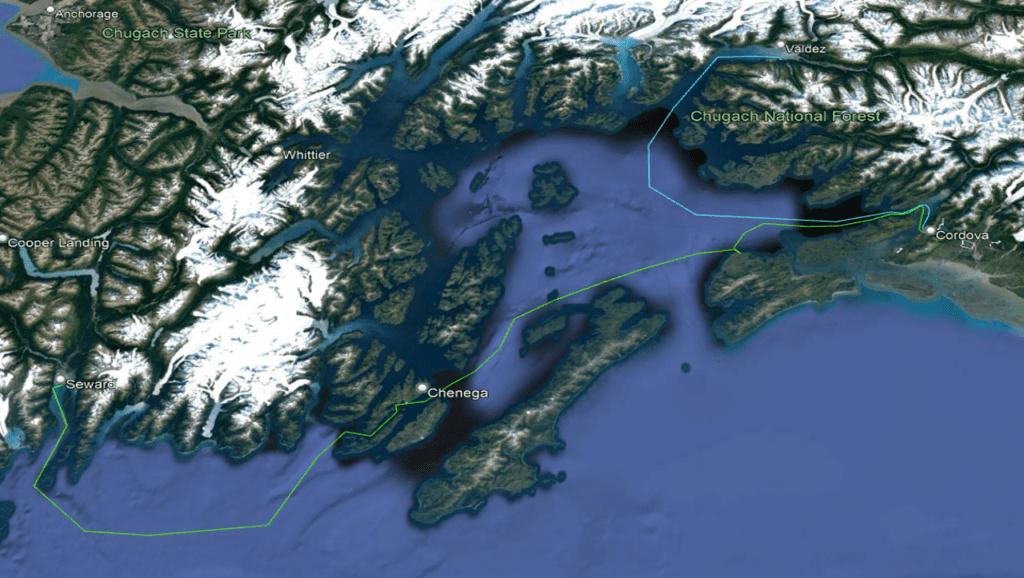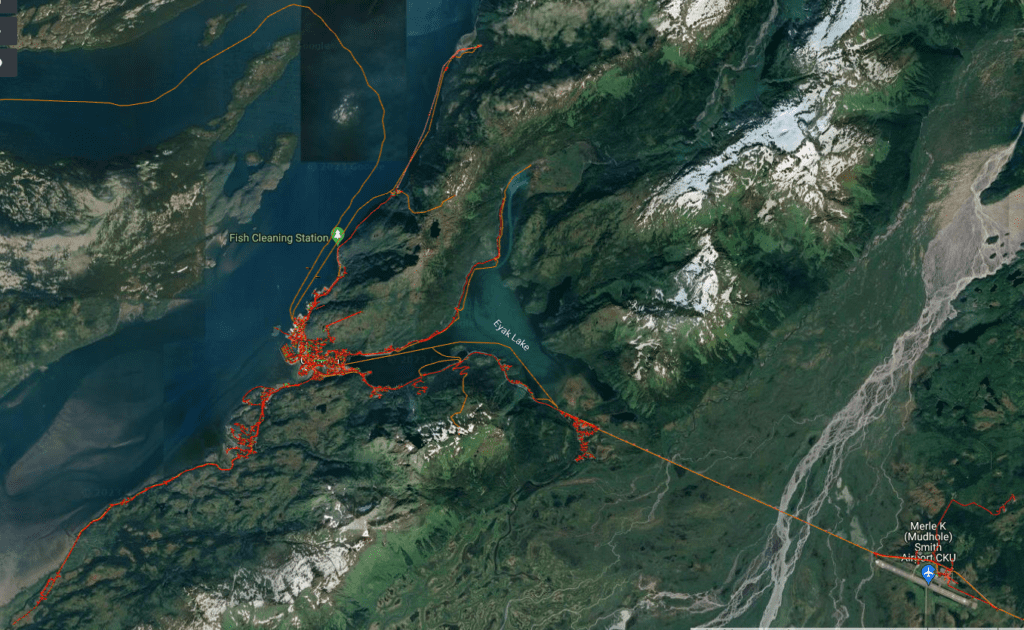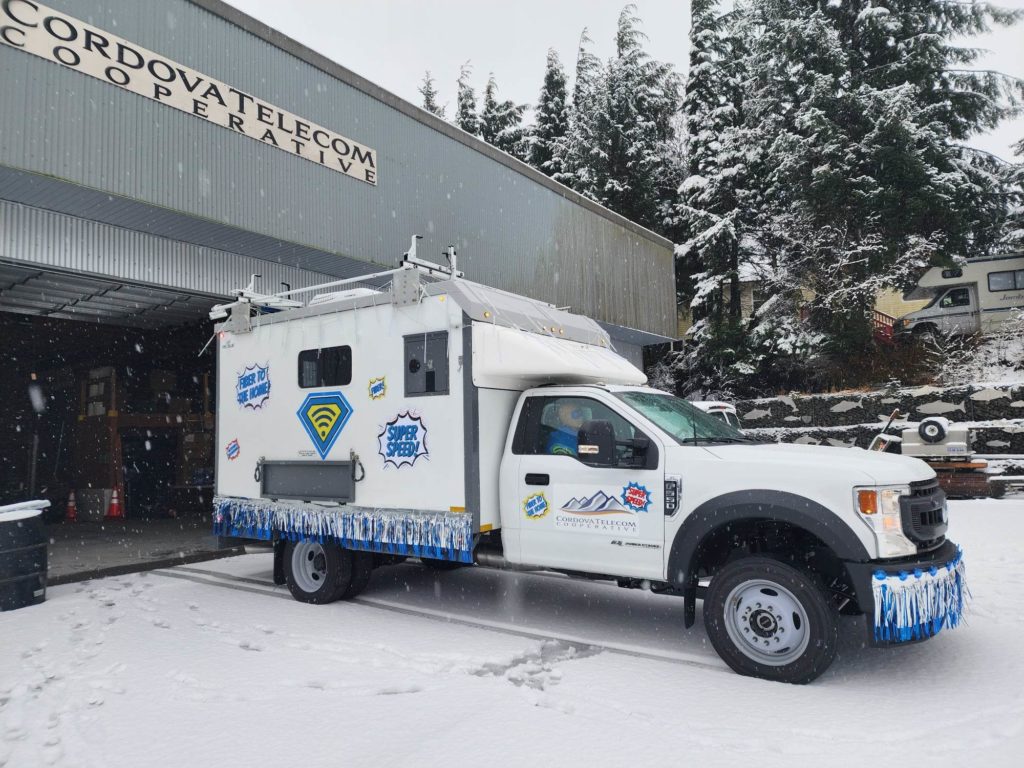
Increased internet speed and reliability is coming to Cordova.
That’s according to Cordova Telecom Cooperative (CTC) and Pioner Consulting, who announced a partnership on March 22 to plan and prepare for a new submarine cable running from Cordova to Seward — which is set to increase broadband access.
Jeremiah Beckett, CEO of the cooperative, explained that the Fiber Internet Serving Homes in Alaska (FISH in AK) project has two key aspects: replacing copper with fiber optics to provide more reliable infrastructure and deliver significantly faster internet, and provide redundancy and resilience in case of an emergency — like a major earthquake or issue with the current carriers in Valdez.
The cable will have stops in Johnstone Point, a key Federal Aviation Administration location, and the Village of Chenega.

CTC announced in July 2022 it was awarded $21,404,940 in grant funding from the U.S. Department of Agriculture’s (USDA) Rural Utility Service (RUS) ReConnect Round 3 program to deliver Fiber-To-The-Home in Cordova, and a submarine fiber line from Cordova to Seward.
The ReConnect Program offers federal financing and funding options through grants, loans, and loan/grant combinations to facilitate broadband development in rural and underserved America. CTC was awarded RUS loan funds in 2009 to position the undersea fiber cable running from Cordova to Valdez.
The program has been beneficial for CTC and many other Alaskan telecom companies, awarding roughly 43 million over the last five years to help with upgrades in the community and neighboring communities. Beckett said his team is excited to see where things go with continued infrastructure funding opportunities.
The grant funding is effective from 2023 through 2026, and Beckett said they anticipate taking the next four summers to update the entire community, with construction starting next year. This year without construction, Beckett said CTC will be able to deliver new cables to roughly 10% of the community.
Because this is a federally funded project, there will be no cost to communities. CTC does not anticipate price plan changes, just increased speed of their packages. Current pricing and paradigm will hold fast, Beckett said.
“As the services across America and the world continue to grow, the needs for data to support those services grow as well,” he said.
Different types of uses — from telehealth to streaming — have different types of speed needs.
The purpose behind this project “is to make a tangible difference in the lives of the people in Cordova and the communities in the area,” said Phillip deGuzman, the lead project manager and director of client solutions for Pioneer Consulting.
The undersea cable currently in the area is 12 years old, and there have been lots of advancements in technology since then, deGuzman said, noting that the cable CTC plans to install will greatly improve broadband connectivity compared to what the current cable is providing — including better speeds for improved educational capabilities, remote work, video conferencing, and telehealth.
As it stands now, the cable can carry less than a terabyte of capacity, and the new cable can carry multiple terabytes — that’s the difference between thousands of high-definition movies downloaded in seconds instead of minutes. The added capacity means more high-definition conference calls, and access to communicating with other parts of the country with a lot more clarity and bandwidth, deGuzman said.

The project will also generate a redundant cable to the region in case there is an issue or fault. Luckily there are no faults on the current cable, deGuzman said, because if it was damaged in some way “that’s a big disruption to the community’s internet service.”
Right now, Beckett said if something happened to the current Cordova line the community could go “dark.”
While it is a huge construction project, deGuzman said, the cable itself is the size of a garden hose and doesn’t take up a lot of space on the seabed. It also may sound like the project will disrupt the seabed or impact fishermen, he said, however the crew wants “to work together to make this project a success so that everyone benefits.”
He said that in order to do this successfully open communication is imperative.
“A very important part of planning an undersea cable is communication with the local fishing entities, fishing authorities, local fishermen, and fishing unions,” deGuzman said. “It can’t be stated enough how important it is to have discussions early on with the community and make the community aware that there is an undersea cable project that is occurring in the area.”
Generally, the biggest challenge to any undersea cable is external factors such as fishing gear from commercial fishing and anchors, said deGuzman. While they focus on making sure they don’t negatively impact the lives of fishermen, they also consider ways to mitigate dangers to the cable, such as burying cable in the sea floor or installing armor around it.
Often, submarine cables are buried under the seabed, especially closer to the shore. He said that environmental precautions are also an important part of any undersea cable project, and that local, state, and federal authorities want to ensure that the construction does not affect the environment of the area. The USDA funding means that there is a heavy emphasis on potential environmental effects. For those reasons, Pioneer is studying the impacts on the environment, culturally sensitive areas, and marine protected environments.
“It’s important to emphasize how critical these undersea telecom cables are,” said deGuzman. “They are important infrastructure to everyone in the world now. Everybody uses the internet. It’s becoming a normal part of everyone’s lives. Being able to install these undersea cables and provide high quality broadband to all communities whether it be in the U.S. or around the world is important, so that everyone has access to things like telehealth, education, and entertainment.”

Undersea specialist and advisor Pioneer Consulting is working with CTC to put together an engineering and design study to advise on the submarine cable project. Pioneer and CTC started working on the engineering and design phase in January, and expect to complete by June or July of this year. Pioneer conducted a preliminary study for CTC back in 2021.
“The FISH project is a major upgrade to connectivity for Cordova, and also will expand Alaska’s broadband infrastructure backbone to support the entire region,” said Christine O’Connor, the executive director of the Alaska Telecom Association. “It really demonstrates the expertise and leadership of Cordova Telecom and their commitment to serving their members.”
Looking ahead, one thing CTC is engaged in is digital equity as a component to access.
“Our town has internet, we are upgrading that internet, but does everyone know how to use it?” said Beckett. “Bringing fiber to someone’s home is great, but if they don’t know how to get online to fill out their PFD application did we really succeed?”
He said the project aims to address some of those concerns.
“We’re looking for ways to bridge that gap, and ensure that not only do they have the services, but they have the devices and the knowledge to use those services,” said Beckett.





